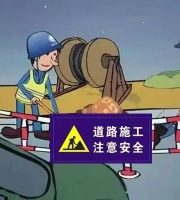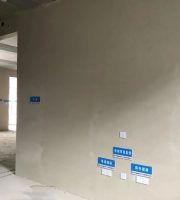It is strictly prohibited to carry out multi-layer vertical operations without protective measures.
When there are safety risks in vertical cross operation of multiple types of work, safety protection facilities should be set up between the upper and lower layers.
Safety warning signs should be set up at the main construction sites, operation levels, hazardous areas, and main passageways.
It is recommended to collect and learn from it.
For existing safety issues and hidden dangers, personnel, time, and measures should be designated to organize rectification.
3.1.3 Protective measures should be taken at the construction site based on the type of safety accident.
High altitude operators should correctly wear safety helmets, safety belts, and other labor protection equipment.
The following content must be strictly enforced.
They should have sufficient strength, stiffness, and stability, and the construction load should not exceed its design load.
3.2.4 It is strictly prohibited to operate or pass on components and pipelines that are not fixed or have no protective facilities.
Safety Management 3.1 General Provisions 3.1.1 Engineering projects should develop various safety production management systems based on the characteristics of the project, and establish a sound safety production management system.
When encountering severe weather conditions such as thunderstorms, heavy snow, dense fog, or strong winds of level 5 or above in the workplace, work at heights should be stopped
.
3.2.5 All types of operating platforms and manned devices should be safe and reliable, and edge protection should be set up around them.
3.1.2 Safety production propaganda slogans and signs should be reasonably set up on the construction site, and the signs should be firmly and reliably set up.
At the same time, a large number of mandatory provisions related to engineering construction standards will be abolished.
This mandatory standard is closely related to the safety management of construction sites, with a focus on Chapter 3 [Safety Management] and Chapter 6 [Occupational Health Management].
This specification is a mandatory engineering construction specification, and all provisions must be strictly enforced.
The Ministry of Housing and Urban Rural Development has issued the national standard “General Code for Safety, Health, and Occupational Health on Construction Sites in Buildings and Municipal Engineering”, numbered GB55034-2022, which will be implemented from June 1, 2023.
3.22 Reasonable work sequence should be established for high-altitude operations.
3.2.3 Safety protection measures shall be taken for the reserved holes, passageways, stairwells, elevator wellheads and other holes of the project under construction, as well as the surrounding areas of floors without enclosure facilities or with enclosure facilities less than 1.2m in height, the sides of stairs, platforms or balconies, the surrounding areas of roofs and the edges of ditches, pits, grooves and other edges, and random demolition is strictly prohibited.
3.14 Construction, hoisting, installation of work sheds, construction of living facilities, or stacking of components, scaffolding, materials, and other debris shall not be carried out directly below the external power overhead lines.
3.2 Falling from heights 3.2.1 When conducting high-altitude or high-altitude operations at a height of 2m or more above the reference plane of the falling height, safety protection facilities should be installed and anti slip measures should be taken.
3.



